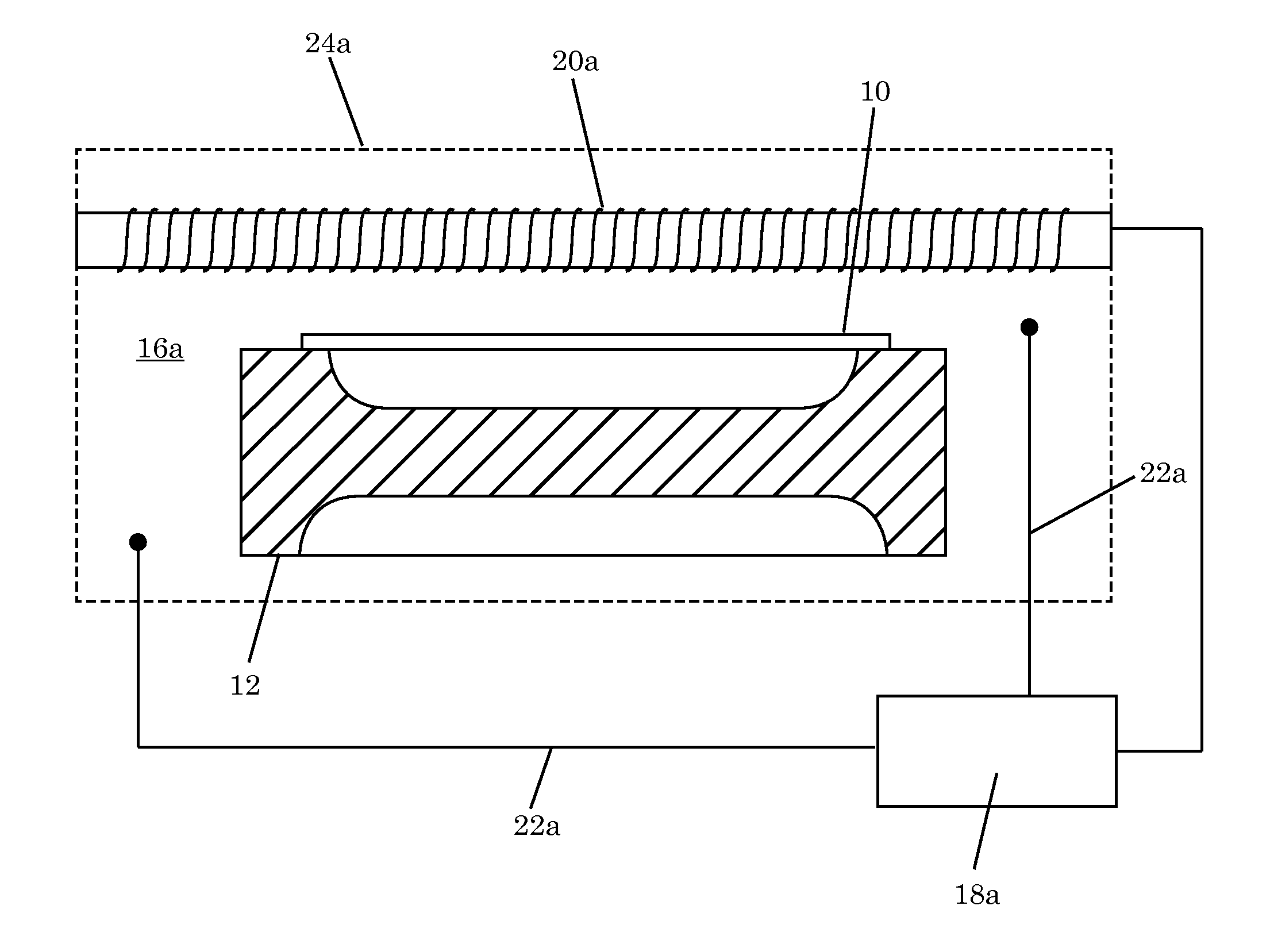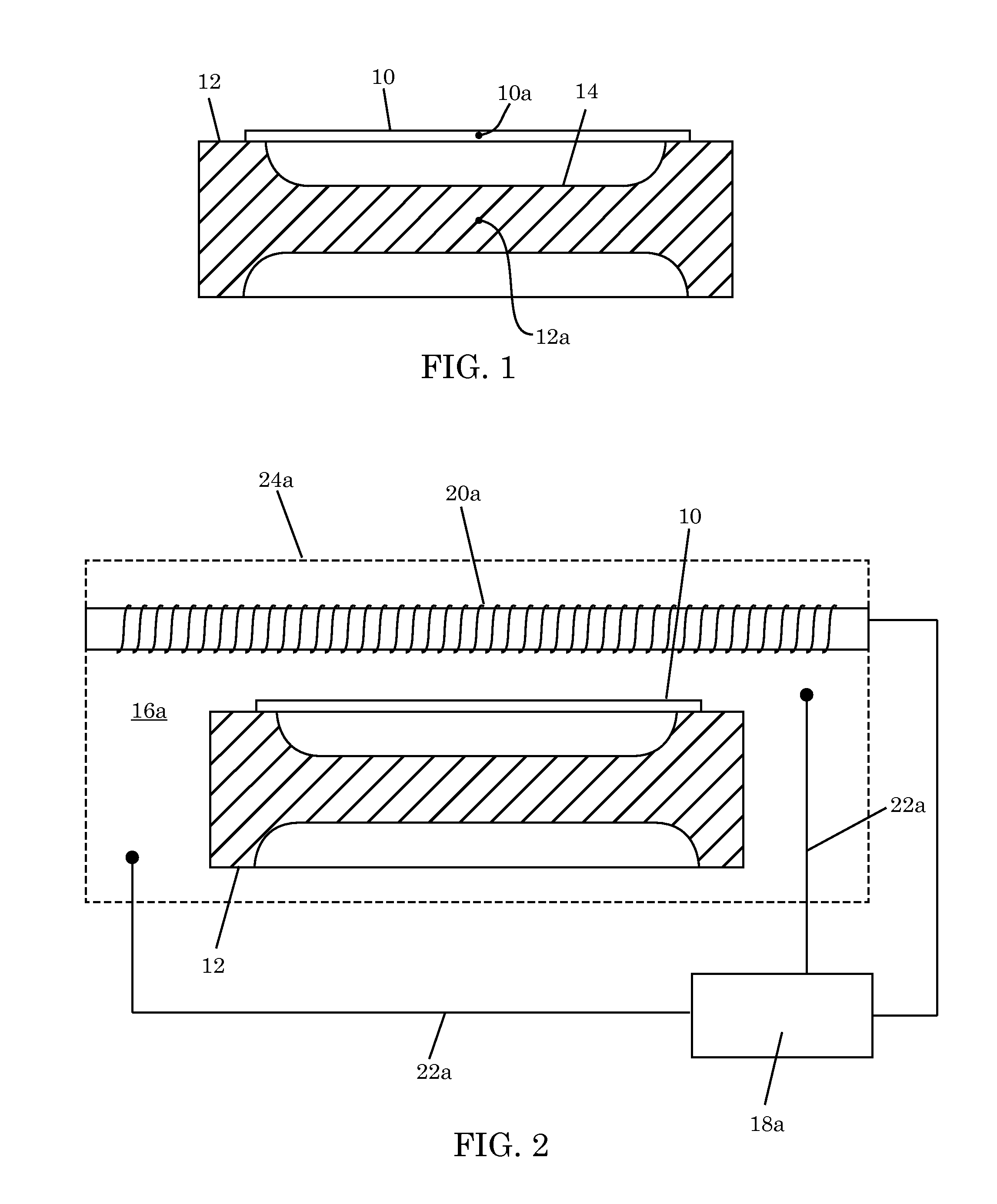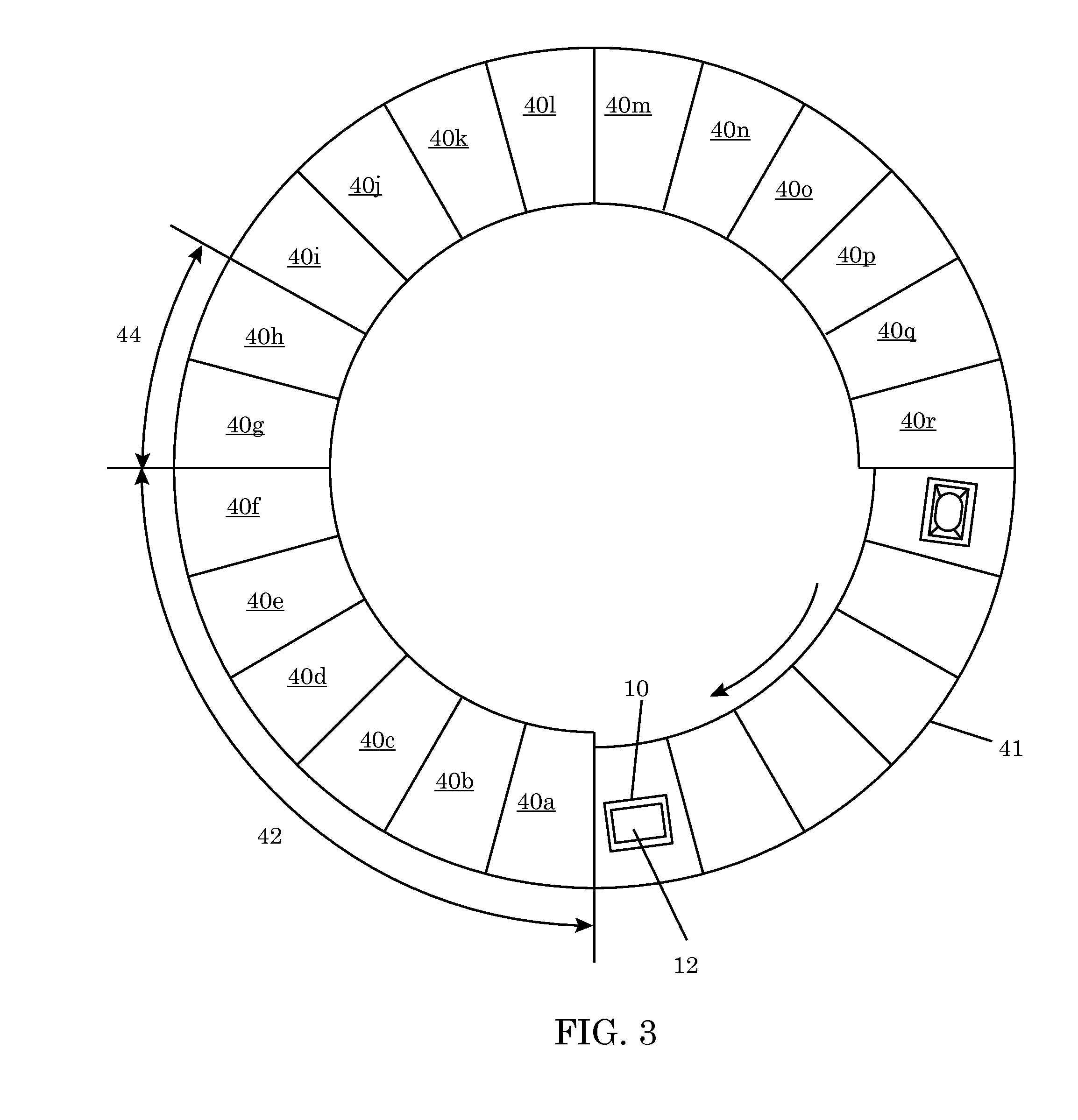Method of Reforming Glass
a glass and glass technology, applied in the field of glass reforming, can solve the problems of slow process, inability to form glass without damaging glass, and inability to meet the needs of glass formation, so as to avoid the effect of slow respons
- Summary
- Abstract
- Description
- Claims
- Application Information
AI Technical Summary
Benefits of technology
Problems solved by technology
Method used
Image
Examples
Embodiment Construction
[0020]In the following detailed description, numerous specific details may be set forth in order to provide a thorough understanding of embodiments of the disclosure. However, it will be clear to one skilled in the art when embodiments of the disclosure may be practiced without some or all of these specific details. In other instances, well-known features or processes may not be described in detail so as not to unnecessarily obscure the disclosure. In addition, like or identical reference numerals may be used to identify common or similar elements.
[0021]FIG. 1 shows a glass sheet 10 placed on top of a mold 12 having a shaping surface 14 for forming the glass sheet 10 into a shaped glass article. The shape of the shaping surface 14 will be dictated by the desired shape of the shaped glass article. Alignment features (not shown), such as pins and the like, may be used to align the glass sheet 10 on the mold 12.
[0022]The glass sheet 10 has a glass composition selected based on the desi...
PUM
| Property | Measurement | Unit |
|---|---|---|
| Temperature | aaaaa | aaaaa |
| Temperature | aaaaa | aaaaa |
| Temperature | aaaaa | aaaaa |
Abstract
Description
Claims
Application Information
 Login to View More
Login to View More - R&D
- Intellectual Property
- Life Sciences
- Materials
- Tech Scout
- Unparalleled Data Quality
- Higher Quality Content
- 60% Fewer Hallucinations
Browse by: Latest US Patents, China's latest patents, Technical Efficacy Thesaurus, Application Domain, Technology Topic, Popular Technical Reports.
© 2025 PatSnap. All rights reserved.Legal|Privacy policy|Modern Slavery Act Transparency Statement|Sitemap|About US| Contact US: help@patsnap.com



